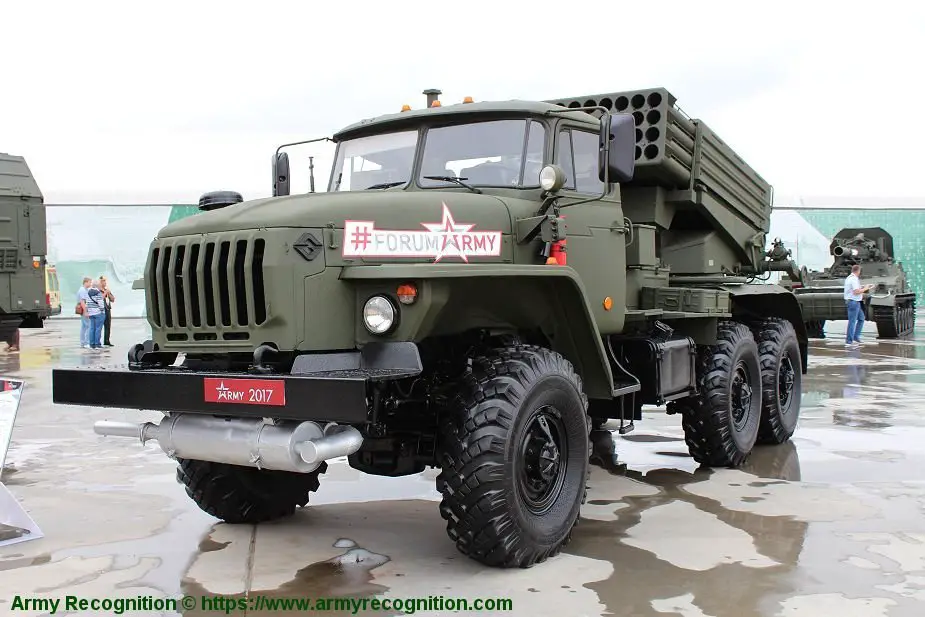Breaking news
Russian coastal troops in Crimea armed with Tornado-G MLRS.
The Russian Defense Ministry radically increases the firepower of the coastal troops in Crimea. They are receiving Tornado-G multiple launch rocket systems (MLRS) which replace Grad in artillery regiments and battalions of the peninsula. Tornado-G is fully automatic and can independently guide missiles at targets, the Izvestia daily writes.

Tornado-G MLRS (Picture source: Army Recognition)
Tornado-G MLRS have been supplied to the 8th artillery regiment of the coastal forces and the 126th coastal defense brigade of the Black Sea fleet, Defense Ministry sources said. The rearmament with the new MLRS is to be completed in 2019.
Tornado-G 9K51M is an upgraded option of Grad 9K51. It is distinguished by improved fire control with satellite navigation and a computer to calculate ballistic parameters. Tornado-G is fully automatic. Upon receiving target coordinates, the weapon makes calculations, deploys the launchers to the necessary angle and elevation, and fires by command. The operators have only to deliver the MLRS to the assigned point, deploy it and order fire.
Fire is controlled without human interference. It is even not always necessary to boot the data, as the system can independently receive and process information from reconnaissance vehicles and drones. Full automatic operation accelerates fire missions. The vehicle crew has been cut from three to two men. The deployment time on an unequipped combat position has been decreased to six minutes and comprises from 0 to one minute on an equipped one. The weapon fires the whole round of munitions in several minutes and needs one minute to prepare for a march and abandon the position.
Tornado-G has much better characteristics against predecessors, such as the range, accuracy and density of fire. It can quickly and effectively destroy various targets, expert Sergey Suvorov said. The integration with the automatic control system considerably cuts the deployment and engagement time, he added.
The modern weapon increases the combat potential of Crimea, expert Viktor Murakhovsky said. "Tornado-G can be engaged together with the automatic control system which provides for centralized fire control. MLRS automatically receive coordinates and other firing data. They can immediately occupy the positions and fire by a single vehicle or in a group. They can rapidly withdraw after fire to new positions and continue the mission. Thus, they avoid the risk of retaliation fire," he said.
Tornado-G has a maximum range of 40 km which can be increased in future. The combat capabilities were expanded due to new rocket-propelled projectiles. They include cluster munitions with separable warheads and homing cumulative charges for the destruction of armor.
Tornado-G belongs to a MLRS family which includes various calibers. Besides 122mm Tornado-G, there is 300mm Tornado-S. The latter was created for major artillery formations engaged in important fire missions. The first Tornado-S were supplied to the Southern Military District in 2019.
Tornado-S is also fully automatic and can independently guide missiles. The rearmament with the weapons will robotize the Russian artillery. All artillery formations of the district and central subordination will be rearmed with Tornado-S in the coming years, the Izvestia said.
© Copyright 2019 TASS / Army Recognition Group SPRL. All rights reserved. This material may not be published, broadcast, rewritten or redistributed.



















